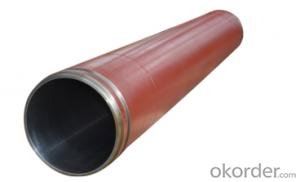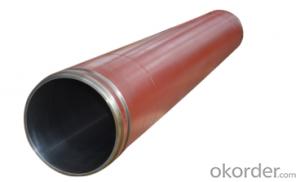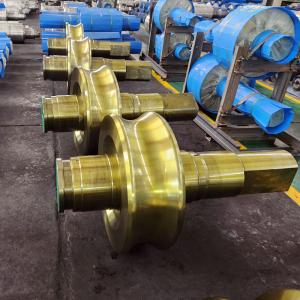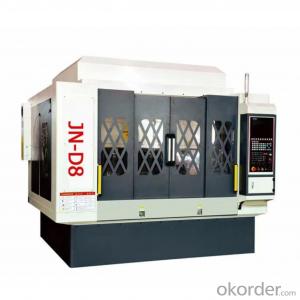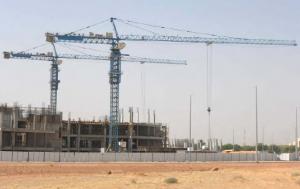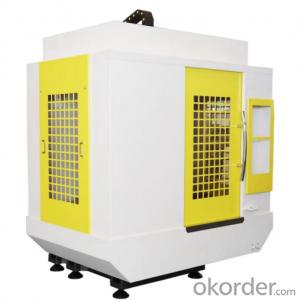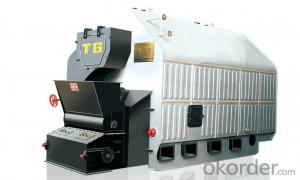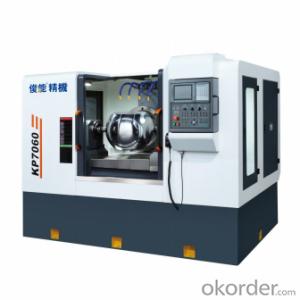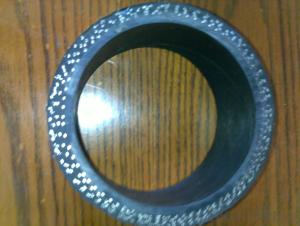PUMPING CYLINDER(PM) I.D.:DN180 CR. THICKNESS :0.25MM-0.3MM LENGTH:2000MM
- Loading Port:
- Shanghai
- Payment Terms:
- TT OR LC
- Min Order Qty:
- 2 pc
- Supply Capability:
- 1000 pc/month
OKorder Service Pledge
OKorder Financial Service
You Might Also Like
Product Description:
The Concrete Pump Delivery Cylinder DN180*2000 normally made by steel material No. C45. according to customer’s requests, and also package in bundles or nude packing directly put into container.
Scope of Application of the Cylinders
The Pump Delivery Cylinder DN180*2000 is a Cylinder pumping for combined use with other concrete pumps parts in concrete pumping operations. It can be widely used in the construction of various types of concrete structures like industrial and civil buildings, bridges, roads, and other types of infrastructure.
This Cylinder Cylinder DN180*2000 can only be used in concrete pump construction operations, but not in any other operations, like dragging, moving, or hoisting heavy articles or personnel. The pipe is also not allowed to be used in any location where any combustible or explosive material exists or a cave-in may occur.
Specifications:
Concrete Pump Delivery Cylinder DN180*2000
1. Capacity: 60,000~80,000cbm
2. Size: DN180, DN200, DN230.DN250
3. Material: C45
4. quenching and tempering to improve the hardness to HB241-280
5. inner wall chrome thickness is 0.25-0.30mm, hardness HV820-900.
6. Brand: SCHWING, PM, SANY, KYOKUTO, CIFA
7. Capacity: 60,000~80,000cbm
Product Advantages:
OKorder's Cylinders DN180*2000 Channels are durable, strong, and safety.
Main Product Features:
· Premium quality
· Prompt delivery & seaworthy packing (10-20 days)
Reliable performance
Easy to weld
High safety.
· Professional Service
· Competitive pricing
Measuring of wall thickness from the outside
Low purchase cost
FAQ:
Q1: How long about delivery time about DN180*2000 ?
A1: Normally we keep the raw materials for old customers and sometime we also keep stock products to make sure delivery time in any emergency cases.
Q2: How do we guarantee the quality of our Cylinders DN180*2000?
A2: We have established an advanced quality management system which conducts strict quality tests at every step, from raw materials to the final product. At the same time, we provide extensive follow-up service assurances as required.
Q3: How soon can we receive the product after purchase?
A3: Within three days of placing an order, we will book the vessel for goods. The specific shipping date is dependent upon international and government factors, but is typically10 to 30 workdays.
Q4: If we can produce some Cylinders DN180*2000 according to customers request?
A4: Yes, we can produce Cylinders DN180*2000 according to the difference country situations to make it suitable to the market and customers. We have very professional technical team to make the design.
Q5: How to make a quick resolution for after service?
A5: OKorder and our manufacture both have overseas branches all-around of world.
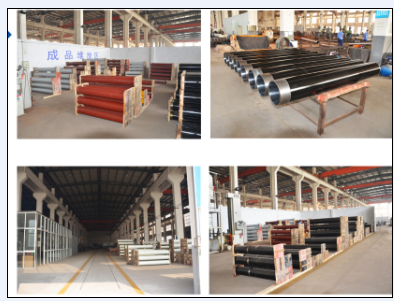
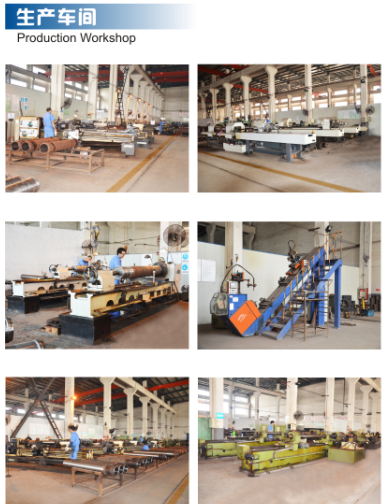
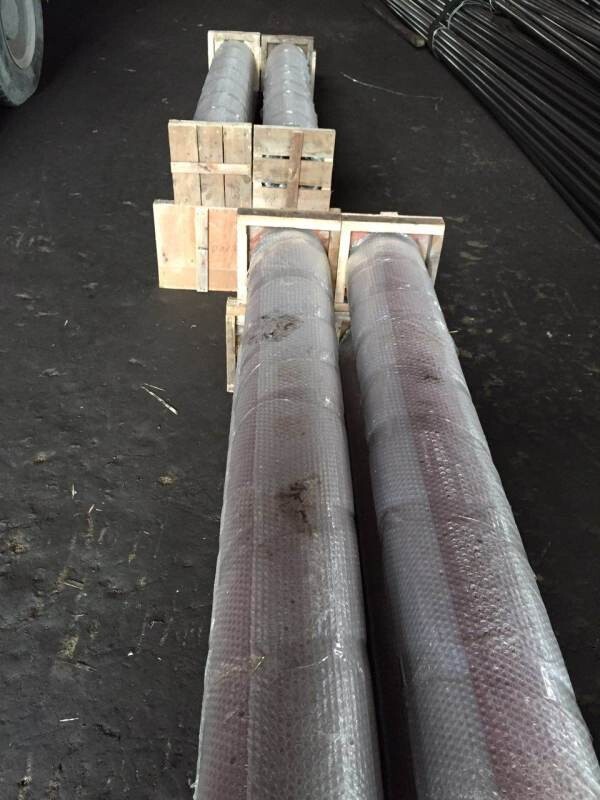
- Q:How can a faulty hydraulic filter affect the pump's hydraulic system?
- A faulty hydraulic filter can negatively impact the pump's hydraulic system in several ways. Firstly, it can allow contaminants such as dirt, debris, or particles to enter the hydraulic fluid, causing damage to the pump and other components. These contaminants can also clog or block the filter, reducing its efficiency and restricting the flow of fluid. This can lead to increased pressure, decreased performance, and potential overheating of the hydraulic system. Additionally, a faulty filter may fail to remove water or other contaminants from the fluid, further compromising the system's performance and reliability. Overall, a faulty hydraulic filter can result in reduced efficiency, increased wear and tear, and ultimately, system failure if not addressed promptly.
- Q:Can concrete pump spare parts be customized with branding or logos?
- Yes, concrete pump spare parts can be customized with branding or logos. Many manufacturers and suppliers offer the option to customize spare parts with branding or logos according to the specific requirements of the customer. This customization can include adding logos, names, or specific branding elements onto the spare parts. It not only enhances the aesthetic appeal of the spare parts but also helps in promoting the brand or company. Customized branding or logos on concrete pump spare parts can also serve as a form of identification and help in distinguishing the parts from others in case of repair or replacement needs.
- Q:Can I get spare parts for concrete pump hoppers and agitators?
- Indeed, one can acquire spare parts for concrete pump hoppers and agitators. Numerous concrete pump and equipment manufacturers and suppliers furnish spare parts for their merchandise. To ascertain the accessibility and cost of spare parts, one may reach out to the manufacturer or supplier of their particular concrete pump hopper or agitator. Furthermore, there exist specialized firms that cater to various brands and models of concrete pumps and equipment, offering an extensive array of spare parts readily available for dispatch upon request.
- Q:Can concrete pump spare parts be heat-treated or hardened for increased durability?
- Concrete pump spare parts can undergo heat treatment or hardening to increase their durability. By subjecting the parts to controlled heating and cooling processes, their mechanical properties can be altered. This alteration significantly improves their hardness, strength, and wear resistance, thus enhancing their durability and ability to withstand harsh operating conditions. Various heat treatment methods, such as quenching and tempering, induction hardening, and case hardening, can be applied to different types of spare parts, including cylinders, pistons, wear plates, and delivery pipes. These processes contribute to the overall performance and lifespan of the spare parts, ensuring their ability to withstand the demanding nature of concrete pumping operations.
- Q:How can a faulty concrete pump cylinder affect the pumping process?
- The pumping process can be significantly impacted by a faulty cylinder in the concrete pump. The cylinder's role is crucial in the concrete pumping system as it generates the necessary pressure to push the concrete through the pipes and hoses. A decrease in pumping efficiency is one of the main issues caused by a faulty cylinder. If the cylinder is worn out or damaged, it may not generate sufficient pressure to effectively push the concrete. This can lead to a decrease in the pumping rate and overall productivity of the concrete pumping operation. Moreover, a faulty cylinder can cause irregular and inconsistent flow of concrete. This can result in blockages or clogs in the pipes, disrupting the pumping process. Removing these blockages can be time-consuming and costly, as it may require disassembling the pumping system to access and clear the blocked area. Additionally, leaks can occur in the pumping system due to a faulty cylinder. These leaks not only waste concrete but also reduce the overall pressure in the system, impacting the ability to pump the concrete to the desired location. Furthermore, leaks can create a messy worksite, posing safety risks for workers and potentially damaging surrounding structures. Furthermore, the risk of equipment failure is increased by a faulty cylinder. If the cylinder malfunctions or fails completely, it can cause the entire pumping system to shut down. This can result in significant downtime and delays in the concrete pouring process, leading to additional costs and potential penalties. In conclusion, a faulty concrete pump cylinder can have a significant impact on the pumping process by reducing efficiency, causing irregular flow, promoting leaks, and increasing the risk of equipment failure. To ensure smooth and efficient concrete pumping operations, it is essential to regularly maintain, inspect, and replace the cylinder in a timely manner.
- Q:Are there any specific guidelines for the selection and installation of hydraulic components in concrete pump spare parts?
- Concrete pump spare parts have specific guidelines for the selection and installation of hydraulic components. When choosing these components, it is important to consider factors like the maximum operating pressure, flow rate, and compatibility with the existing hydraulic system. First and foremost, it is crucial to ensure that the selected hydraulic components can handle the maximum operating pressure of the concrete pump. This includes components such as hydraulic cylinders, valves, and pumps. To ensure their durability and longevity, it is advisable to choose components with a higher pressure rating than that of the concrete pump's operating pressure. Additionally, the flow rate of the hydraulic components must match the requirements of the concrete pump system. Hydraulic pumps and valves need to provide sufficient flow to effectively operate the concrete pump. Factors such as the size of the concrete pump, desired output capacity, and specific pumping requirements should be taken into consideration. Furthermore, compatibility with the existing hydraulic system is vital for the smooth operation of the concrete pump. It is important to select hydraulic components that are compatible with the system in terms of fittings, connections, and overall design. Seeking guidance from the manufacturer's guidelines or professional advice is recommended when selecting and installing hydraulic components in concrete pump spare parts. Moreover, proper installation is essential to ensure optimal performance and safety of the hydraulic components. Following the manufacturer's installation instructions and guidelines is highly recommended. The installation process should include proper alignment, secure mounting, and appropriate sealing of the components to prevent any leaks or failures. In conclusion, there are specific guidelines for selecting and installing hydraulic components in concrete pump spare parts. Considering factors like maximum operating pressure, flow rate, compatibility, and following proper installation procedures can help ensure the efficient and safe operation of the concrete pump system.
- Q:Are there any specific guidelines for the transportation of concrete pump spare parts?
- Yes, there are specific guidelines for the transportation of concrete pump spare parts. These guidelines usually include ensuring proper packaging and securing of the parts to prevent damage during transit. It is also recommended to use specialized transport vehicles equipped with appropriate handling equipment. Additionally, proper documentation and labeling of the spare parts are crucial for easy identification and tracking.
- Q:Can concrete pump spare parts be pre-assembled or pre-tested before installation?
- Concrete pump spare parts can undergo pre-assembly and pre-testing prior to installation. This allows for quality control measures to be implemented before the actual installation takes place, ensuring that any defects or issues with the parts can be identified and resolved before they are put into the concrete pump. Furthermore, pre-testing the spare parts guarantees their functionality and compatibility with the pump system, enabling any necessary adjustments or modifications to be made in advance. By engaging in these practices, the risk of complications during the installation process is reduced, resulting in a smooth and efficient operation of the pump system.
- Q:How can I extend the lifespan of my concrete pump spare parts?
- To extend the lifespan of your concrete pump spare parts, there are several key steps you can take: 1. Regular maintenance: Implement a comprehensive maintenance schedule for your concrete pump, including the spare parts. This should include regular inspections, cleaning, and lubrication of the parts. By identifying and addressing any issues early on, you can prevent further damage and extend the lifespan of the parts. 2. Use high-quality spare parts: Invest in high-quality spare parts from reputable manufacturers. Cheaper alternatives may save you money initially, but they tend to have shorter lifespans and may require frequent replacements. Opting for quality parts will ensure durability and longevity. 3. Proper storage: Store your spare parts in a clean, dry, and well-organized environment. Exposure to moisture, extreme temperatures, and dirt can deteriorate the parts over time. Consider using protective covers or cases to shield the parts from dust and other contaminants. 4. Train operators: Proper operation of the concrete pump is crucial to preventing unnecessary wear and tear on the spare parts. Ensure that your operators are well-trained and follow the manufacturer's guidelines for usage and maintenance. Discourage any misuse or improper handling of the equipment, as this can lead to premature wear of the spare parts. 5. Regular cleaning: Keep your concrete pump clean by regularly removing any concrete buildup. The accumulation of hardened concrete can cause additional strain on the spare parts and lead to premature failure. Use appropriate cleaning methods and tools to ensure thorough removal without causing damage to the parts. 6. Timely repairs: Address any issues or damage to the spare parts as soon as they are identified. Ignoring or delaying repairs can worsen the problem and potentially cause damage to other components. Regularly inspect the spare parts for signs of wear, such as cracks, leaks, or excessive vibration, and promptly address any concerns. 7. Monitor usage and performance: Keep track of the usage and performance of your concrete pump and spare parts. Regularly monitor the wear and tear of the parts and the overall performance of the pump. Analyze any patterns or trends that may indicate potential problems and take corrective actions to prevent further damage. By following these steps, you can significantly extend the lifespan of your concrete pump spare parts, ensuring optimal performance and reducing the need for frequent replacements.
- Q:How often should hopper cylinders be inspected or replaced in a concrete pump?
- Hopper cylinders in a concrete pump should be inspected regularly, ideally after every use, to ensure their proper functioning and prevent any potential issues. If any signs of wear, damage, or decreased performance are noticed, it is recommended to replace the hopper cylinders immediately to maintain the efficiency and safety of the concrete pump.
1. Manufacturer Overview |
|
|---|---|
| Location | |
| Year Established | |
| Annual Output Value | |
| Main Markets | |
| Company Certifications | |
2. Manufacturer Certificates |
|
|---|---|
| a) Certification Name | |
| Range | |
| Reference | |
| Validity Period | |
3. Manufacturer Capability |
|
|---|---|
| a)Trade Capacity | |
| Nearest Port | |
| Export Percentage | |
| No.of Employees in Trade Department | |
| Language Spoken: | |
| b)Factory Information | |
| Factory Size: | |
| No. of Production Lines | |
| Contract Manufacturing | |
| Product Price Range | |
Send your message to us
PUMPING CYLINDER(PM) I.D.:DN180 CR. THICKNESS :0.25MM-0.3MM LENGTH:2000MM
- Loading Port:
- Shanghai
- Payment Terms:
- TT OR LC
- Min Order Qty:
- 2 pc
- Supply Capability:
- 1000 pc/month
OKorder Service Pledge
OKorder Financial Service
Similar products
New products
Hot products
Related keywords

